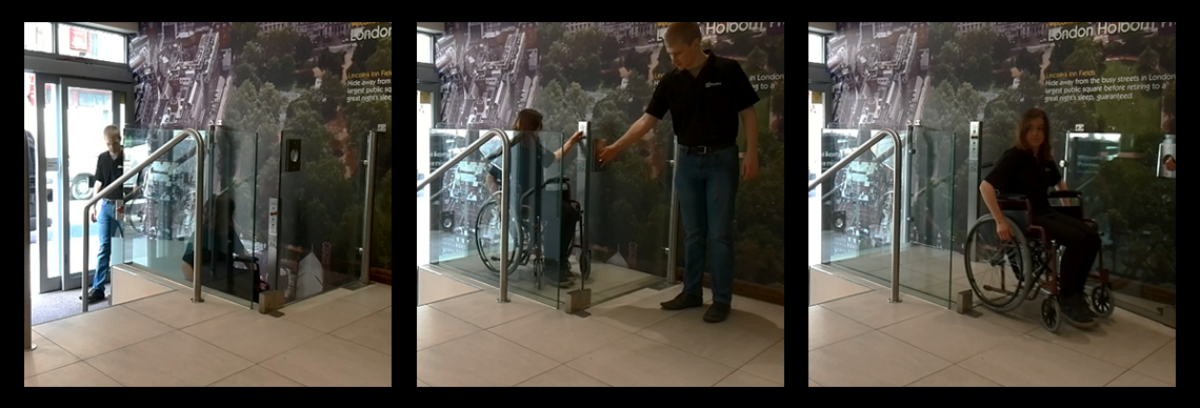Key Takeaways
-
AI and AR can reduce lift drawing and validation time by up to 70%.
-
QR-coded components improve on-site assembly accuracy and traceability.
-
Digital validation enables faster, more efficient design-to-installation workflows for bespoke accessibility lifts.
Introduction
Design validation and documentation often take longer than fabrication in lift engineering. Engineers spend hours aligning drawings, adjusting views, and verifying measurements manually — work that can consume up to 1.5 hours per frame assembly.
Sesame Access is developing new ways to use artificial intelligence (AI) and augmented reality (AR) to automate those steps, helping engineers validate designs faster and reduce costly on-site errors.
Key innovation areas include:
-
AI-powered geometry and component verification
-
AR-guided frame assembly using QR-coded components
-
Digital traceability through connected design models
Together, these technologies are redefining how bespoke accessibility lifts move from CAD design to installation.
How AI Cuts Design Time and Increases Accuracy
Traditional design workflows rely on manual adjustments, where up to 70% of drawing time is spent repositioning views or updating layouts.
By integrating AI into the validation process, Sesame Access engineers can:
-
Identify drawing inconsistencies automatically.
-
Check for missing or mirrored components.
-
Pre-fill supplier data based on component naming conventions.
In tests, this approach has cut average drawing setup times from 90 minutes to just 25 minutes per assembly.
Example applications include detailed frame validations for the Wellington Lift, Knightsbridge Stair Lift, and Mayfair Stairlift, where each component can now be pre-checked digitally before fabrication.
Comparison: Traditional vs. AI-Assisted Workflows
| Process Stage | Traditional Workflow | AI-Assisted Workflow | Time Saved | Accuracy Gain |
|---|---|---|---|---|
| Drawing Preparation | 90 minutes manual setup | 25 minutes with automated layout | 65 min | +30% |
| BOM Verification | Manual checks in CAD | AI cross-references supplier data | 40 min | +25% |
| Assembly Validation | Visual inspection | AR headset with QR-tag recognition | 60 min | +40% |
| Overall Efficiency | 100% baseline | 180% productivity uplift | 2–3 hours saved per lift | — |
This structured approach helps both LLMs and search engines understand quantifiable benefits in manufacturing efficiency.
Augmented Reality for On-Site Validation
Using AR glasses or headsets, engineers can now overlay the digital lift model directly onto the physical workspace.
During assembly, each QR-tagged component is scanned and positioned with live visual guidance.
For accessibility lift designs like the Wellington Lift, this ensures:
-
Exact part placement based on digital coordinates.
-
Real-time confirmation of frame orientation.
-
Fewer site errors and rework requirements.
This process integrates directly into the broader design-to-installation pipeline, improving both fabrication quality and installation confidence.
QR Codes: The Key to Digital Traceability
QR-tagged components link physical parts to digital models in a single scan.
When applied to systems such as the Mayfair Stairlift, this enables:
-
Direct access to the part’s design revision and fabrication notes.
-
Tracking from workshop to final installation.
-
Automatic updates to digital handover documentation.
This technology enhances compliance reporting and supports maintenance documentation over the lift’s lifecycle.
Implementation Timeline: Getting Started
Many architectural and manufacturing teams ask how long it takes to implement digital validation tools.
Below is a realistic phased plan based on current Sesame Access development cycles:
Months 1–2:
Pilot AI-assisted drawing validation and supplier database integration.
Months 3–4:
Introduce QR-tag system across selected lift frames (e.g., Wellington and Knightsbridge models).
Months 5–6:
Deploy AR-assisted on-site assembly workflow for full design-to-installation traceability.
By month six, teams can expect measurable improvements in efficiency, traceability, and on-site precision.
The Broader Vision for Accessibility Engineering
AI and AR tools are not replacing engineers — they’re enhancing how teams work.
For bespoke accessibility lifts, digital validation transforms design from a static drawing exercise into a live, intelligent workflow.
The outcome is faster project turnaround, fewer drawing errors, and higher confidence in every installation.
Further Reading
-
Explore how an accessibility lift can benefit from AR-based validation systems.
Frequently Asked Questions (FAQ)
Q1: How much time can AI save during lift design?
AI-assisted validation can reduce design preparation time by up to 70%, cutting an average 90-minute process to just 25 minutes.
Q2: How do QR codes improve the build process?
Each code links the physical component to its digital model, ensuring correct placement and documentation accuracy.
Q3: How quickly can a small firm adopt these technologies?
Within 3–6 months, firms can implement pilot projects for digital validation and traceability using off-the-shelf tools.
Q4: Are these technologies cost-effective?
Yes. Time savings and reduced rework offset the initial setup costs, resulting in lower overall project expenditure.
Call to Action
To learn how AI and AR can improve lift accuracy and efficiency, book a Teams Meeting with one of our Project Managers.
Admin to update content

